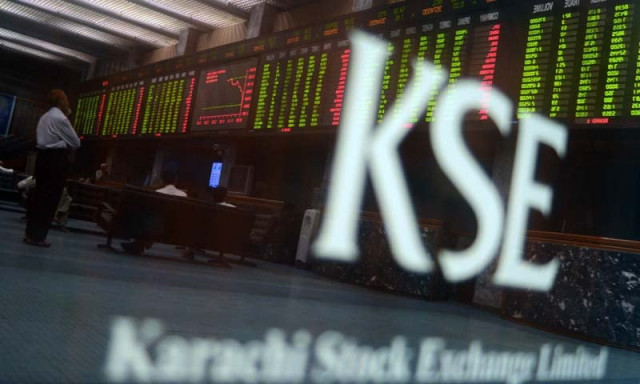Post-Fed’s decision: Correlation between KSE and global markets expected to end
After recent plunge, stock exchange could now follow local direction

After recent plunge, stock exchange could now follow local direction. PHOTO: AFP
Meanwhile, volatility over the same period has been extremely high, fueled by regulatory action and and heightened risk in global equity markets.
Standard deviation in daily returns of the KSE-100 index during 2015 has increased by 25% compared to 2014. The current year, so far, has been eventful for global financial markets where commodities crash has led to huge depreciation of currencies in emerging markets and caused a further shift in economic positions of many countries.

The stock market bubble burst in China and questions with respect to US Federal Reserve going for rate hike had also recently placed many exchanges around the world in utter confusion.
KSE, on the other hand, has historically been somewhat immune to international equity markets, but got severely coupled recently. Correlations between Mumbai’s Sensex, Shanghai, KSE-100, Global Dow and S&P 500 indices over 2015 suggests that KSE-100 had no correlation at all with any of the regional or global equity markets.
On the other hand, Sensex and Shanghai over the same period have had moderate positive correlation with the global markets.
The last month and a half
However, it is striking to note that over the last month and a half all international markets have coupled with huge strength.
Sensex and Shanghai over the last 45 days have correlations with Global Dow and S&P 500 exceeding 90%. A far more interesting fact is that KSE-100 index over the last 45 days is almost perfectly tracing international markets, which over 2015 year to date had no correlation at all.
This sudden coupling of international markets is obviously led by foreign flows.
Foreign flow numbers over the last 45 days in emerging markets have been very unpredictable. Sensex has witnessed approximately $2.5 billion foreign inflows over 2015 year to date. Over the last 45 days, there has been huge foreign outflow worth $3.4 billion from Bombay Stock Exchange. Similar activity has been observed in Shanghai where foreign outflows over the last 45 days have exceeded $100 billion.
The KSE has had a similar experience. In 2014, it received foreign inflows worth $377 million. On the other hand, over 2015 the KSE witnessed foreign outflows worth $171 million, $78 million being withdrawn over the last 45 days.

Foreign flows continue to make Chinese, Indian and Pakistan’s stock exchanges queasy. KSE’s independent performance based on strong fundamentals and improving macros will now depend on the rate of decoupling of international equity markets.
Nonetheless, the decoupling will now start to happen. The US Federal Reserve has decided to hold off fire in interest rates and China’s stock market turmoil is almost over now. In the days ahead, KSE’s performance is expected to depend more on local politics and country’s economic affairs.
The writer is a team lead at a brokerage house
Published in The Express Tribune, September 21st, 2015.
Like Business on Facebook, follow @TribuneBiz on Twitter to stay informed and join in the conversation.



















COMMENTS
Comments are moderated and generally will be posted if they are on-topic and not abusive.
For more information, please see our Comments FAQ